Pokud vám lyžařské boty kazí den na svahu, nejste sami. Od tlakových míst po problémy s velikostí, tyto potíže mohou bolet vaše nohy a ovlivnit váš lyžařský výkon. Ale tady je dobrá zpráva: existují řešení - a dokonce i alternativy - které mohou váš čas na sněhu udělat mnohem pohodlnějším.
Klíčové poznatky:
- Špatně padnoucí lyžařské boty způsobují nepohodlí, necitlivost a dokonce zranění.
- Běžné problémy zahrnují tuhé skořepiny, chyby ve velikosti a omezenou flexibilitu pro různé aktivity.
- Řešení zahrnují vlastní vložky, teplem tvarované vložky a profesionální bootfitting.
- Nebo úplně vynechte lyžařské boty! Snowfeet* nabízí vybavení, které funguje s vašimi vlastními zimními botami nebo snowboardovými botami, což vše zjednodušuje a činí přenosnější.
Chcete lyžovat bez starostí? Pojďme to všechno rozebrat.
5 největších problémů s lyžařskými botami, kterým lyžaři čelí
Běžné problémy s padnutím lyžařských bot a jejich příčiny
Lyžařské boty jsou často neoceněnými hrdiny – nebo padouchy – dne na svahu. Tradiční lyžařské boty s jejich tuhými skořepinami mohou způsobovat řadu nepohodlí a problémů s výkonem. Pojďme si rozebrat některé z nejběžnějších problémů spojených s těmito designy a proč k nim dochází.
Nepohodlí a tlakové body
Hlavním viníkem nepohodlí v lyžařských botách je tuhá plastová skořepina, která dominuje trhu. Tyto skořepiny se nepřizpůsobují přirozenému tvaru vaší nohy, což vede k tlakům, které mohou lyžování udělat bolestivým. Pokud jste někdy zažili bolest holeně, bolest prstů, puchýře, necitlivost nebo zvedání paty, víte, o čem mluvíme. Tyto problémy nejen bolí, ale také snižují vaši kontrolu na svahu.
A teď to hlavní: tradiční boty nutí vaše nohy do pevného tvaru místo toho, aby pracovaly s jejich přirozenými konturami. Pro správné padnutí by mělo být mezi patou a zadní částí skořepiny asi 0,75" až 1,25", když se prsty dotýkají přední části. Prostor podél vnitřní kontury nohy by neměl přesáhnout 0,5". Pokud to není správně nastaveno, nepohodlí je nevyhnutelné – a často to vede k problémům s velikostí.
Výzvy při výběru velikosti
Častou chybou lyžařů je koupě bot, které jsou příliš velké, s představou, že budou pohodlnější. Ale lyžařské boty nefungují jako běžné boty. Místo zaměření na velikost boty musíte trefit správné padnutí skořepiny. Jak to moudře říkají The Snow Chasers:
"Kupovat o číslo větší pro pohodlí je past." – The Snow Chasers
Půjčovací boty jsou často typickým příkladem špatného výběru velikosti, kdy skořepina přesahuje 3 cm. Tento volný střih obětuje kontrolu, zatímco příliš těsné boty vás mohou přivést k utrpení. Na rozdíl od běžné obuvi jsou lyžařské boty navrženy tak, aby vaše nohy a paty pevně držely na místě. To, co v lyžařské botě "sedí", je velmi odlišné od toho, na co jste zvyklí. A dopad špatné velikosti není jen o pohodlí – špatně padnoucí boty mohou vést k problémům s koleny, holeněmi a zády, protože vaše tělo kompenzuje nedostatek správné podpory.
Jak zdůrazňuje Shuman Podiatry & Sports Medicine:
"Lyžařské boty jsou ještě důležitější než lyže, pokud jde o bezpečnost a výkon." – Shuman Podiatry & Sports Medicine
Nedostatek flexibility napříč aktivitami
Další nevýhodou tradičních lyžařských bot je jejich univerzální přístup k flexibilitě a výkonu. Hodnocení flexibility obvykle sahá od 60 (měkké a vhodné pro začátečníky) po 140+ (tvrdé a závodní). Ale tady je háček: toto jediné číslo nevystihuje celý příběh. Nezohledňuje, jak bota funguje v různých podmínkách nebo s různými styly lyžování.
Pevné boty, i když jsou skvělé pro přesnost, mohou bránit rovnováze a absorpci nárazů, což vás nutí do nepohodlné pozice. Naopak měkčí boty jsou shovívavější a umožňují přirozený pohyb kotníku, což je ideální pro začátečníky. Mohou však brzdit pokročilé lyžaře, kteří potřebují přesnou kontrolu hran. Tato tuhost často nutí vážné lyžaře kupovat více párů bot pro různé podmínky – což je drahé a nepraktické řešení.
Dalším opomíjeným faktorem je boční flexibilita, která často ovlivňuje výkon více než přední ohyb. Bohužel tradiční boty vás často uzamknou do jednoho stylu lyžování, což ztěžuje přechod z alpského lyžování na jiné sněhové aktivity podle podmínek nebo preferencí. Je to frustrující omezení pro každého, kdo chce ze svého času na horách vytěžit maximum.
Řešení problémů s padnutím lyžařských bot
Pokud vaše lyžařské boty nesedí úplně správně, nebojte se – nejste odsouzeni k nepohodlí. Existuje spousta způsobů, jak boty upravit pro lepší pohodlí a výkon. Tyto úpravy sahají od jednoduchých nastavení, která zvládnete doma, až po pokročilejší modifikace prováděné profesionálním bootfitterem.
Přizpůsobení fitu pomocí podšívek a vložek
Části vašich bot, které se dotýkají nohou – jako vložky a podšívky – mohou rozhodnout o tom, jak vám boty sedí. Vylepšení těchto komponent může zcela změnit pocit z bot. Například vlastní vložky mohou stabilizovat nohu uvnitř boty, omezit nežádoucí pohyb a udržet nohu v nejbezpečnější pozici.
Vložky do bot jsou k dispozici v různých cenových hladinách a úrovních přizpůsobení. Základní vložky na střih na míru stojí kolem 50–60 USD, zatímco plně přizpůsobené možnosti mohou dosáhnout až 300 USD. Mezi oblíbené volby patří Tread Labs Dash Insoles (115 USD) a Superfeet Green Insoles, známé svou spolehlivou podporou klenby. Pro lyžaře, kteří potřebují extra ochranu proti nárazům, jsou Remind Remedy 5.5mm teplem tvarovatelné vložky oblíbené mezi freestyle a freeride sportovci.
Tady je profesionální tip: při výběru vložek se zaměřte spíše na podporu paty než na podporu klenby. Jak říká Jake Stern, profesionální botník a digitální editor v Outside:
"Veškerá vaše kontrola a stabilita v lyžařské botě pochází z subtalárního kloubu v patě, který podporuje vaši nohu a ovládá pronaci – takže není tak důležitá podpora klenby jako podpora paty."
Tvarování vložek teplem je další způsob, jak zlepšit padnutí. Tento proces pomáhá vložkám přizpůsobit se vašim nohám, urychluje dobu rozchodu a snižuje tlakové body. Je to zvláště účinné u nových bot – stačí je obout, nechat měkkou pěnu přizpůsobit se nohám a nosit je při lyžování, abyste identifikovali případná problematická místa.
Pro ty, kteří hledají dokonalé padnutí, jsou skvělou volbou profesionální vylepšení vložek jako Surefoot custom liners (za cca 485 $). Tyto vložky lze vyměňovat mezi skořepinami bot stejné velikosti. Pokud jsou prioritou odolnost a přizpůsobení, Zipfit korkem napuštěné vložky jsou ideální pro alpské lyžování, zatímco Intuition vložky jsou ceněné mezi turisty pro jejich teplo a lehkou konstrukci.
Tyto vylepšení tvoří základ pro přesnější úpravy bot.
Úprava velikosti bot
I ty nejmenší problémy s velikostí mohou narušit váš komfort na svahu.
Pokud vám boty přijdou příliš těsné, zkuste nejprve přejít na tenčí lyžařské ponožky. Tento jednoduchý trik často vytvoří dostatek místa, aniž by ovlivnil podporu. Pro přetrvávající těsné oblasti může odborník na boty upravit skořepinu, aby ulevil tlaku.
Pokud jsou vaše boty příliš velké, vaše možnosti jsou omezenější. Ideálně byste je vyměnili za menší velikost, ale pokud to není možné, vrstvení ponožek může pomoci – jen mějte na paměti, že to může zvýšit riziko puchýřů.
Problémy s nadzvedáváním paty? Můžete je řešit snížením objemu uvnitř boty. Přidání malé podložky pod patu nebo použití vložky pod patu může pomoci stabilizovat nohu a minimalizovat pohyb.
Další úpravou, kterou stojí za to zvážit, je přizpůsobení manžety, zejména pokud máte jedinečný tvar lýtek. Utahováním nebo povolováním přezek na manžetě (otočte po směru hodinových ručiček pro utažení, proti směru pro povolení) můžete dosáhnout těsného přilnutí. Dobré pravidlo: když jsou přezky zapnuté, měla by manžeta nechat prostor pro jeden nebo dva prsty.
Zlepšení flexibility
Někdy může zlepšení struktury vaší boty znamenat zásadní rozdíl. Zatímco tradiční lyžařské boty jsou často navrženy pro specifické styly lyžování, určité úpravy je mohou učinit univerzálnějšími pro různé terény a podmínky.
Flexe boty je klíčovým faktorem, který je třeba zvážit. Měkčí boty jsou pro začátečníky snazší na ovládání, zatímco tužší boty poskytují větší kontrolu pro agresivní lyžaře. Výběr by měl také záviset na vaší váze, výšce, pohyblivosti kotníků a stylu lyžování. Mějte však na paměti, že hodnocení flexe nevypovídá vše o tom, jak se bota bude chovat.
Úpravy úhlu rampy a předklonu mohou také zlepšit vaši rovnováhu a lyžařskou techniku. Zkušený odborník na boty vám může pomoci tyto nastavení doladit pro vyvážený postoj, což je zvlášť užitečné, pokud máte omezenou pohyblivost kotníků.
Teplé tvarování jak skořepiny, tak vložek může dále zlepšit padnutí tím, že vytvoří více místa v problematických oblastech, jako je nárt nebo špička boty. To je obzvlášť užitečné pro lyžaře s kostnatými chodidly nebo neobvyklými tvary nohou. Pokud je potřeba, může odborník na boty skořepinu natáhnout nebo propíchnout, aby uvolnil tlak na konkrétních místech, aniž by to ovlivnilo celkové padnutí.
Výhoda Snowfeet*: lepší řešení
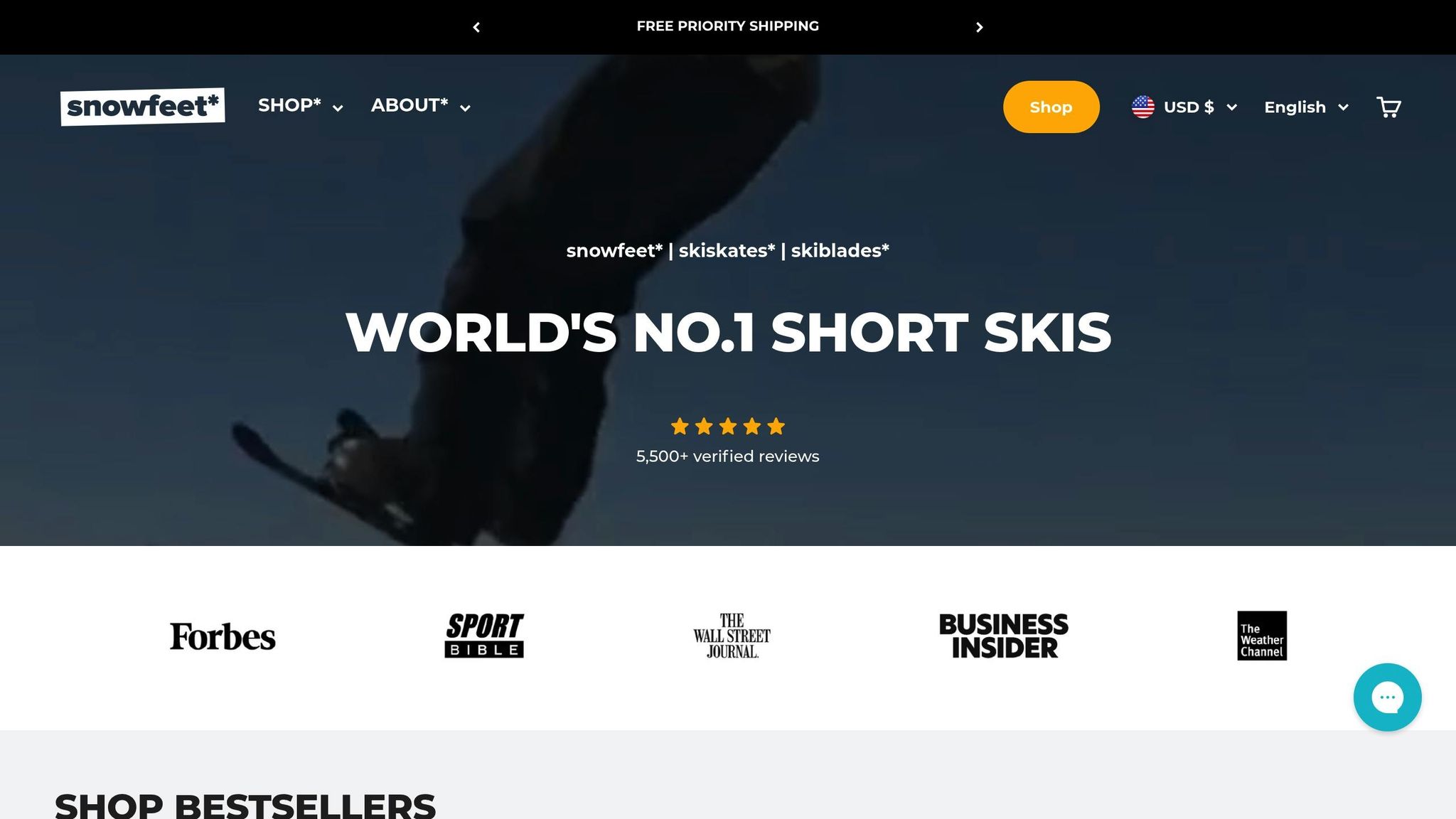
Přiznejme si to - tradiční lyžařské boty od značek jako Rossignol, Atomic a Head mohou být otravné. Od nekonečných zkoušek až po tuhou, neústupnou konstrukci, nejsou zrovna uživatelsky přívětivé. Snowfeet* mění pravidla hry tím, že nabízí chytrou alternativu, která funguje s obuví, kterou už vlastníte. Místo toho, abyste si nohy zamykali do tuhých bot, produkty Snowfeet* vám umožní používat vaše oblíbené zimní boty nebo snowboardové boty. Už žádné speciální úpravy nebo bolavé nohy. Ve skutečnosti více než 80 % zákazníků uvádí, že pohodlí a snadné použití jsou hlavními důvody, proč volí Snowfeet* před tradiční výbavou. Připraveni si zjednodušit zimní sporty?
Univerzální padnutí a kompatibilita s obuví
Tady je velká výhoda Snowfeet*: jsou navrženy tak, aby fungovaly s běžnou zimní obuví a snowboardovými botami. Zapomeňte na potíže s přesným měřením velikosti nebo rozcházáním tuhých lyžařských bot. Produkty Snowfeet* mají design "one size fits most", který pojme velikosti bot od 6 do 13 US (38 až 47 EU). Ať už dáváte přednost pevným turistickým botám, teplé zimní obuvi nebo svým spolehlivým snowboardovým botám, Snowfeet* vás nezklamou.
Snowfeet* nabízí různé modely vázání - Basic, Standard a Pro X - aby vyhovovaly různým typům bot. Jak společnost říká:
"Snowfeet je jednodušší, ale všestrannější model. Můžete je vzít s sebou na túru, běžkařskou trasu, lyžařské svahy nebo jen na místní sáňkařský kopec. Velkou výhodou je, že je můžete nosit s jakoukoli zimní obuví."
Pokud máte menší velikost boty, je skvělou volbou kombinovat Snowfeet* s botami na snowboard pro pevné uchycení. Právě taková flexibilita je něco, s čím tradiční lyžařské boty nemohou soutěžit.
Lehké, přenosné a snadno použitelné
Další výrazná vlastnost? Snowfeet* jsou neuvěřitelně lehké. Váží pouhých 2,5 lb (1,1 kg) za pár, což je zlomek hmotnosti tradičních lyžařských bot a lyží, které často váží 10 lb (4,5 kg) nebo více. Jejich kompaktní velikost znamená, že se pohodlně vejdou do batohu nebo příručního zavazadla, což je ideální pro cestování nebo poslední zimní plány. Porovnejte to s objemným lyžařským vybavením, které často vyžaduje extra úložný prostor a speciální přepravu – to nemá konkurenci.
Připevnění Snowfeet* k vašim botám je hračka. Žádné složité přezky, nekonečné úpravy ani potřeba profesionálního přizpůsobení. Toto jednoduché nastavení znamená, že můžete rychle přepínat mezi aktivitami bez ztráty času. Navíc je údržba minimální – stačí je občas očistit a vyměnit popruhy, když je to potřeba. To je velký rozdíl oproti neustálým úpravám a opravám, které tradiční lyžařské boty často vyžadují.
Flexibilita napříč terény a aktivitami
Snowfeet* nejenže věci zjednodušuje – otevírá nové možnosti. Na rozdíl od tradičního lyžařského vybavení, které vás často omezuje na konkrétní terén nebo styly, jsou Snowfeet* Skiskates a skiblades navrženy pro všestrannost. Použijte je na sjezdovkách, v snowparcích, na turistických stezkách nebo dokonce na své zahradě. Jsou obzvlášť užitečné pro dobrodruhy v divočině, kteří dojíždějí na lyžařská místa pěšky, nebo pro městské obyvatele, kteří se pohybují zasněženými ulicemi.
Mnoho uživatelů hlásí okamžitou úlevu od tlakových bodů a omezeného pohybu, které zažívali s tradičními lyžařskými botami. Tato svoboda vám umožní soustředit se na užívání si času na sněhu, nikoli na boj s vybavením. S průměrným hodnocením 4,5/5 na hlavních e-commerce platformách zákazníci pravidelně vyzdvihují pohodlí, přenosnost a snadné použití Snowfeet*. Je jasné, proč tolik lidí přechází na tento produkt.
sbb-itb-17ade95
Porovnání: Snowfeet* vs. běžné lyžařské boty
Pokud jde o zimní sportovní vybavení, tradiční lyžařské boty mohou být výzvou. Často jsou tuhé, vyžadují přesné přizpůsobení a dlouhou dobu na roznošení. Snowfeet* však nabízí jiný přístup – flexibilnější a uživatelsky přívětivou alternativu.
Jednou z největších výhod Snowfeet* je svoboda obuvi. Na rozdíl od lyžařských bot, které vás uzamknou do konkrétního střihu, Snowfeet* funguje s jakoukoli zimní obuví nebo snowboardovými botami. To znamená konec nepohodlí z tuhých, specializovaných skořepin.
Snowfeet* je také neuvěřitelně lehký a dostatečně kompaktní, aby se vešel do batohu. Ale nejde jen o přenosnost – jeho design ho činí všestranným pro různé zimní aktivity. Ať už jste na sjezdovkách, v snowparku, na zasněžené turistické stezce nebo sáňkujete s přáteli, Snowfeet* se přizpůsobí terénu.
Porovnávací tabulka
| Vlastnost | Běžné lyžařské boty | Snowfeet* |
|---|---|---|
| Terén | Sjezdovky, prašan | Sjezdovky, snowparky, turistické stezky, sáňkařské kopce, zpevněný sníh |
| Aktivity | Sjezdové lyžování | Skiskating, běžecké lyžování, turistika, sáňkování |
| Požadavky na obuv | Lyžařské boty | Jakékoliv zimní boty nebo snowboardové boty |
| Přenosnost | Objemné | Lehké, vejde se do batohu |
| Flexibilita | Omezené | Více flexibilní |
Zatímco tradiční lyžařské boty dobře fungují pro sjezdové lyžování, jsou omezené na tento konkrétní účel. Snowfeet* naopak nabízí všestrannou a pohodlnou možnost pro širší škálu aktivit. Díky možnosti používat vlastní zimní boty Snowfeet* eliminuje starosti s tuhým vybavením a poskytuje flexibilitu, kterou potřebujete k užívání si všech druhů zimních dobrodružství.
Závěr: Užijte si pohodlí a chytrý design se Snowfeet*
Lyžařské boty vám dělají potíže? Nejste sami - až 70 % lyžařů trpí nepohodlím nebo bolestí z lyžařských bot na svahu. Ale existuje způsob, jak si zimní sporty užít bez starostí.
Snowfeet* řeší běžné problémy lyžařských bot tím, že funguje s vašimi zimními botami, které už vlastníte. Zapomeňte na tlakové body, nepohodlné velikosti a drahé profesionální úpravy. Místo utrácení 300–800+ dolarů za tuhé lyžařské boty stojí produkty Snowfeet* mezi 150 a 250 dolary, což nabízí pohodlnější a cenově dostupnější možnost. Tato jednoduchá změna dělá velký rozdíl.
Se středním hodnocením 4,5/5 je Snowfeet* oblíbený pro svůj lehký design, který se snadno vejde do batohu - ideální pro pohodlí kamkoli jdete. Uživatelé chválí, jak jsou pohodlné, snadno použitelné a všestranné.
Na rozdíl od tradičních lyžařských bot, které vás omezují na jednu aktivitu, Snowfeet* otevírá dveře ke skiskatingu, běžeckému lyžování, turistice a dokonce i sáňkování. Jde o svobodu a flexibilitu.
Snowfeet* kombinuje chytrý design s praktickou funkčností. Pokud jste připraveni na lepší zážitek ze zimních sportů, Snowfeet* může být právě tím průlomem, který hledáte.
Často kladené otázky
Jak najdu správné padnutí lyžařské boty, abych zůstal pohodlný a v bezpečí na svahu?
Získání dokonalého padnutí lyžařské boty je zásadní pro pohodlí na svahu a prevenci zbytečných zranění. Vaše boty by měly být těsné - ne bolestivě utažené - s dostatečným prostorem, aby se vaše prsty mohly trochu hýbat. Tato rovnováha pomáhá předcházet tlakovým bodům. Pro větší pohodlí a podporu mohou výrazně pomoci i vlastní vložky nebo podšívky.
Pokud vám přijdou tradiční lyžařské boty od značek jako Rossignol nebo Atomic příliš tuhé nebo je musíte neustále upravovat, produkty Snowfeet* mohou být přesně to, co potřebujete. Možnosti jako Skiskates nebo Skiblades jsou navrženy tak, aby byly lehké, univerzální a mnohem snadněji použitelné. Vyhýbají se mnoha běžným problémům s padnutím a nabízejí uvolněnější a příjemnější způsob, jak se pustit do zimních sportů. Perfektní pro každého, kdo chce bezstarostnou a pohodlnou alternativu!
Co dělá Snowfeet* lepší volbou než tradiční lyžařské boty pro zimní sporty?
Snowfeet* přináší osvěžující změnu do zimního sportovního vybavení, oproti objemným a tuhým tradičním lyžařským botám jako od Rossignol nebo Atomic. Místo toho Snowfeet* nabízí lehký, přenosný a snadno použitelný design. Jejich produkty, včetně Skiskates a Skiblades, se zaměřují na pohodlí a flexibilitu, vyhýbají se běžným problémům jako tlakové body nebo nepohodlné padnutí.
Co je na Snowfeet* skvělé, je jejich schopnost přizpůsobit se vašim potřebám. Můžete doladit padnutí pomocí vložek nebo podšívek, což usnadňuje najít ideální rovnováhu mezi pohodlím a výkonem. Navíc jejich kompaktní velikost a jednoduchost je činí ideálními pro začátečníky nebo pro ty, kdo chtějí vynechat starosti s tradičním lyžařským vybavením. Ať už sjíždíte svahy nebo si jen užíváte pohodovou jízdu na sněhu, Snowfeet* nabízí moderní, nenáročný způsob, jak si užít zimní sporty s větší kontrolou a mnohem větší zábavou.
Jsou produkty Snowfeet* dostatečně univerzální pro různé zimní aktivity a jak si vedou oproti tradičním lyžím z hlediska přenosnosti a pohodlí?
Proč jsou Snowfeet* revolucí pro zimní zábavu
Produkty Snowfeet* přinášejí svěží vítr do zimních aktivit. Ať už máte rádi běžky, snowboarding, sáňkování nebo zimní turistiku, tyto šikovné malé pomůcky vás nezklamou. Co je skvělé? Nepotřebujete speciální boty – stačí je připnout na své běžné zimní boty nebo boty. Rozlučte se s taháním těžkého vybavení a přivítejte víc spontánní zábavy na sněhu.
Teď si povíme, jak si Snowfeet* stojí proti velkým jménům jako Rossignol, Atomic, Elan nebo Head. Na rozdíl od tradičních lyží jsou Snowfeet* lehké a kompaktní. S délkami od pouhých 17 do 47 palců se vejdou do batohu. Není potřeba střešní nosič nebo objemné vybavení. Tato přenosnost je ideální na cestování, nenáročné sněhové dobrodružství nebo pro každého, kdo chce užívat zimy bez starostí. Zimní zábava, jednoduše.
Související blogové příspěvky
- Potřebujete speciální boty pro touring vázání? Často kladené otázky zodpovězeny
- Proč mě bolí lyžařské boty? Běžné příčiny a řešení [2025]
- Průvodce úlevou od bolesti v lyžařských botách 2025: 9 osvědčených řešení pro celodenní pohodlí
- Jak vybrat lyžařské boty, které perfektně padnou a nebudou bolet (Průvodce 2025)







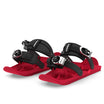
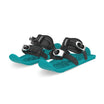



















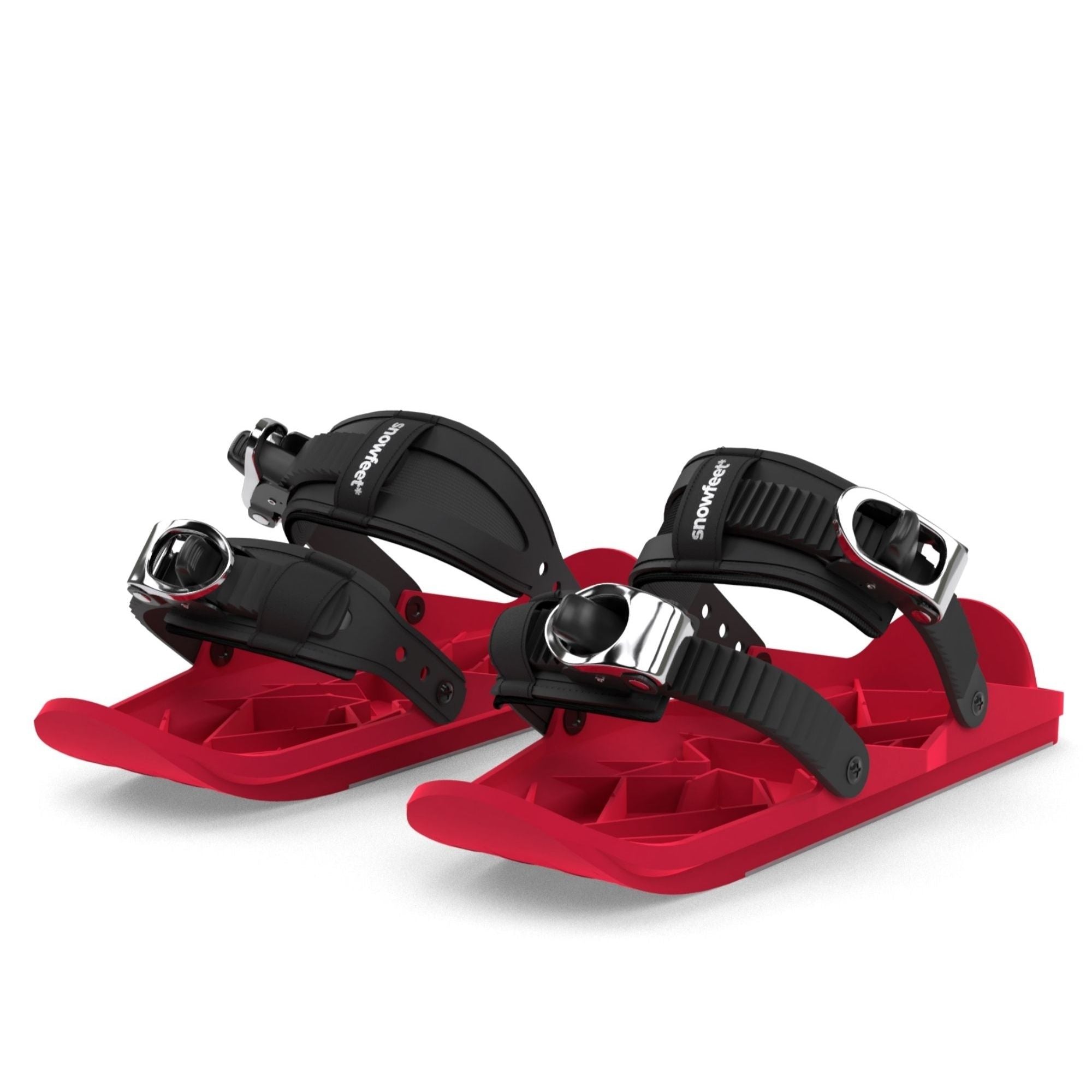
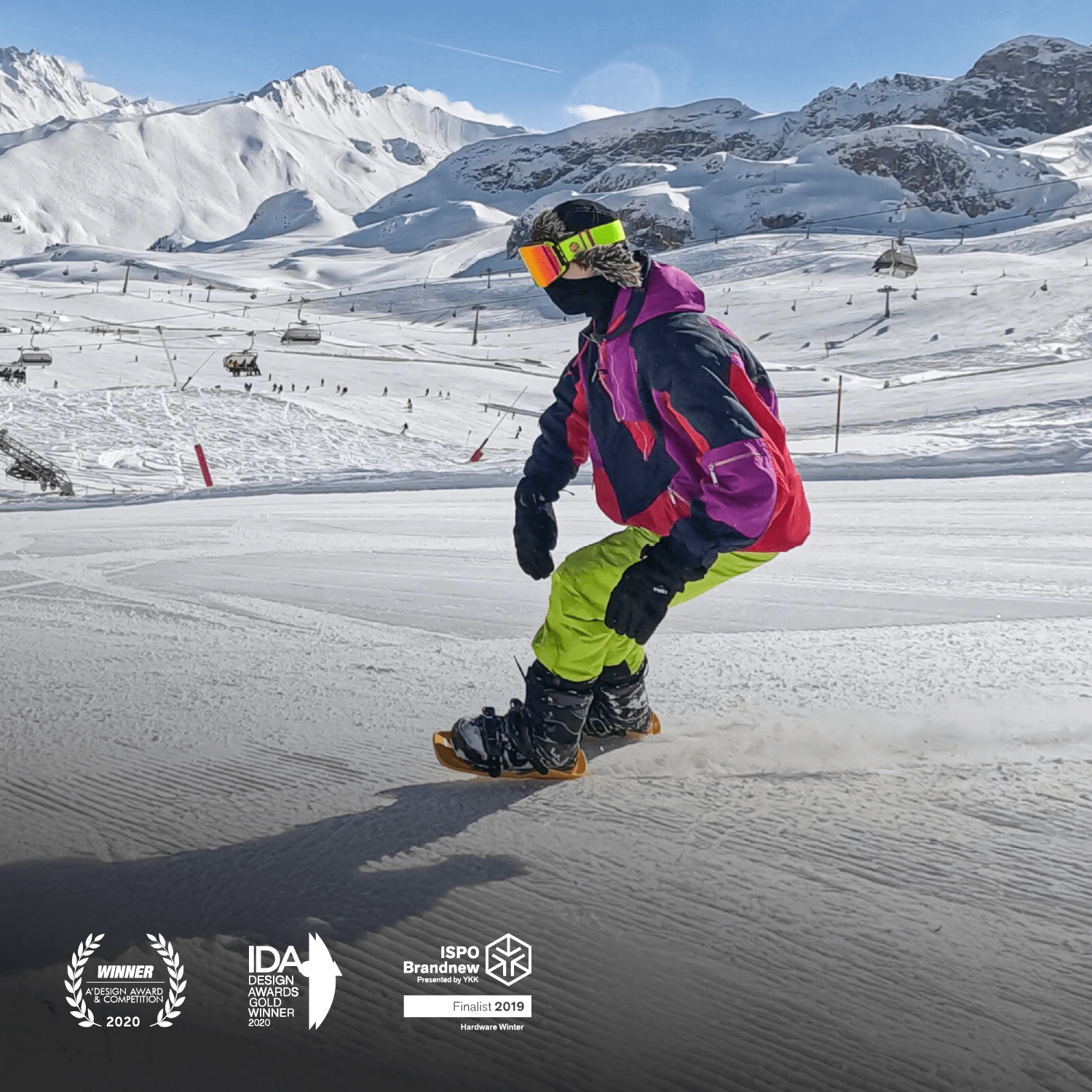




Zanechte komentář
Tento web je chráněn službou hCaptcha a vztahují se na něj Zásady ochrany osobních údajů a Podmínky služby společnosti hCaptcha.